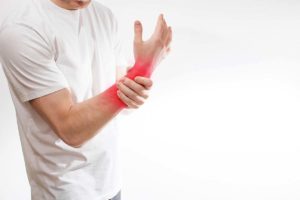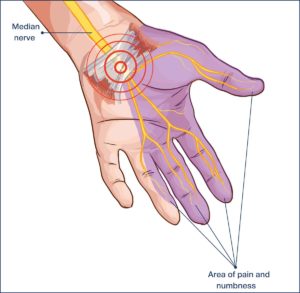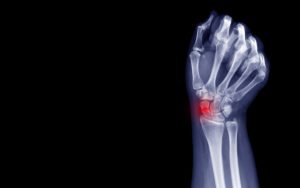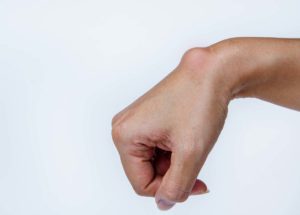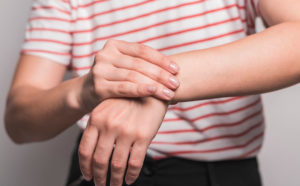
De Quervain’s Tenosynovitis
Typical Symptoms
De Quervain’s Tenosynovitis (DeQT) usually causes pain on the same side as the thumb but usually higher up along the wrist. It typically comes on when the thumb is flexed (bent) or when the wrist is taken into ulnar deviation (away from the thumb side). The pain is usually sharp, localised to a particular area and can be associated with swelling and tenderness to touch.
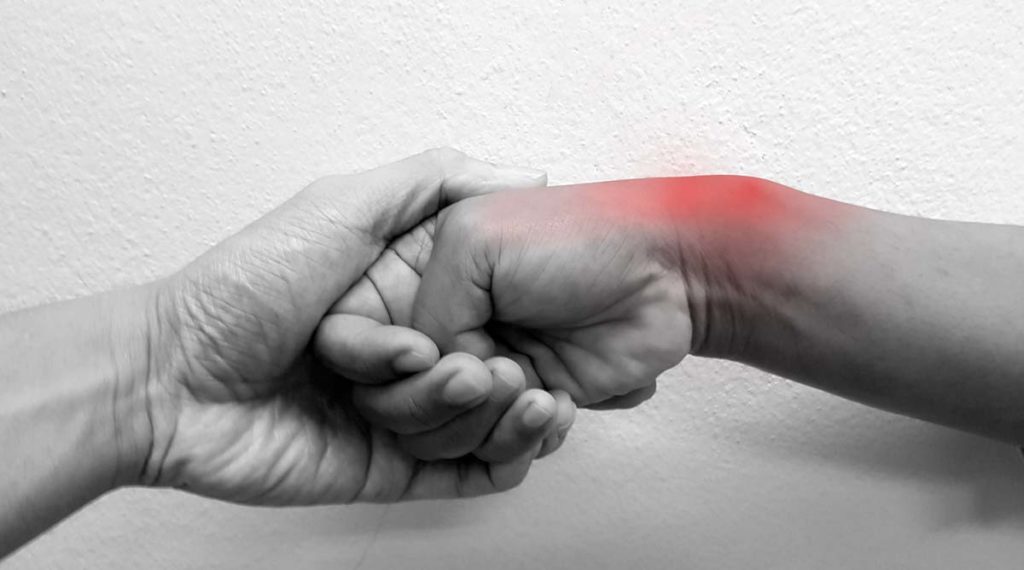
What causes it?
DeQT is due to swelling and inflammatory changes around the tendons in the wrist that enable us to extend (straighten) the thumb. It can be brought on by a particular movement such as carrying a child, using the computer mouse or using a smartphone.
How can I help myself?
In pain-limited cases, using a splint, doing exercises or applying anti-inflammatory gels can help reduce symptoms.
Modifying activities or using aids to help with daily activities can reduce pressure on the joint and help manage symptoms.
When to seek help?
If the symptoms (pain or limited movement) are interfering with your daily occupation or recreational activities, or the simple measures you have taken are ineffective.
What are the treatment options?
Once your clinician has assessed you with a history and examination, they may organise an ultrasound examination of the wrist to look for swelling and increased blood flow around the tendon. If suitable, hand or physiotherapy can be instigated to reduce pressure on the joint itself.
In situations where pain symptoms limit these activities, an ultrasound-guided injection of cortisone around the tendons might help reduce this. If this ineffective, a surgical intervention might be appropriate.
